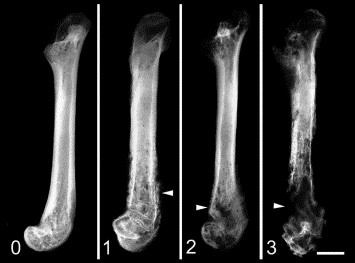Osteoblastic bone metastasis refers to the spread of cancer cells to the bone, resulting in abnormal bone formation. Unlike osteolytic lesions that involve bone degradation, osteoblastic (or osteosclerotic) metastases are characterized by excessive bone deposition. This pathological remodeling disrupts normal bone architecture and leads to significant, often debilitating pain. Common primary malignancies associated with osteoblastic metastases include prostate cancer, breast cancer, and carcinoid tumors.

Mechanisms of Pain in Osteoblastic Bone Metastases
Pain in osteoblastic bone metastasis stems from a complex interplay of biochemical, structural, and neural factors:
- Abnormal Bone Formation: Excessive bone deposition increases intramedullary pressure and compromises vascular and nerve structures.
- Periosteal Irritation: Tumor expansion and aberrant bone growth stimulate periosteal nerve endings.
- Inflammatory Mediators: Cytokines and growth factors released by tumor and stromal cells contribute to local inflammation and sensitization of nociceptors.
- Nerve Entrapment and Infiltration: Progressive tumor growth may invade surrounding nerves, leading to neuropathic pain.
- Fracture Risk: Though denser, osteoblastic bone is often brittle, predisposing patients to microfractures and pathological fractures.
Clinical Presentation and Symptoms
Localized Bone Pain
Pain is typically deep, persistent, and localized to the affected bone. It may worsen at night or with activity.
Reduced Mobility and Function
Stiffness, weakness, and restricted movement are common, particularly in weight-bearing bones.
Neurological Deficits
Spinal metastases may cause radicular pain, numbness, or even paralysis due to spinal cord or nerve root compression.
Systemic Symptoms
Fatigue, malaise, and hypercalcemia (though more common in osteolytic metastasis) may be present.
Common Cancers Causing Osteoblastic Bone Metastasis
- Prostate Cancer: Most frequent source; over 80% of advanced cases develop skeletal involvement.
- Breast Cancer: Can result in mixed lesions with osteoblastic dominance.
- Small Cell Lung Cancer: Occasionally presents with sclerotic metastases.
- Gastrointestinal and Neuroendocrine Tumors: Carcinoid tumors and others can also lead to osteoblastic changes.
Diagnostic Imaging and Biomarkers
Accurate diagnosis and assessment of osteoblastic bone metastasis require a combination of imaging and laboratory tests.
Imaging Modalities
- Bone Scintigraphy (Bone Scan): Highly sensitive for detecting sclerotic lesions; reveals areas of increased osteoblastic activity.
- CT Scan: Excellent for visualizing dense bone structures and differentiating osteoblastic from osteolytic changes.
- MRI: Superior for soft tissue and marrow involvement; useful in detecting spinal cord compression.
- PET-CT: Provides metabolic and anatomical detail, especially when combined with prostate-specific tracers.
Laboratory Markers
- Alkaline Phosphatase (ALP): Elevated in active bone formation and metastasis.
- Prostate-Specific Antigen (PSA): Monitored in prostate cancer patients.
- Bone Turnover Markers: Such as PINP and ICTP, offer insight into remodeling rates.
Pain Management Strategies for Osteoblastic Bone Metastasis
Pharmacologic Treatment
- NSAIDs and Acetaminophen: First-line for mild to moderate pain; reduce inflammation.
- Opioids: Essential for moderate to severe pain; titrated according to patient response.
- Bisphosphonates (e.g., Zoledronic Acid): Inhibit osteoclast-mediated resorption; reduce skeletal-related events.
- Denosumab: A RANKL inhibitor that prevents osteoclast activation; effective in prostate cancer-related bone metastases.
- Corticosteroids: Used for short-term relief and to manage edema or nerve compression.
Radiation Therapy
- External Beam Radiation Therapy (EBRT): Localized treatment to reduce tumor burden and alleviate pain.
- Stereotactic Body Radiotherapy (SBRT): High-dose precision radiation, beneficial for spinal metastases.
Interventional Pain Procedures
- Vertebroplasty/Kyphoplasty: Cement augmentation for spinal metastases to stabilize and relieve pain.
- Nerve Blocks and Neurolysis: Useful for refractory pain or specific nerve-related symptoms.
Systemic Cancer Therapies
- Hormonal Therapy: Androgen deprivation in prostate cancer reduces osteoblastic stimulation.
- Chemotherapy and Targeted Agents: Control primary tumor growth and subsequent metastatic spread.
Integrative and Supportive Care Approaches
Physical Therapy and Rehabilitation
Targeted exercises maintain mobility, strengthen muscles, and reduce complications from immobility.
Palliative Care
Holistic support addressing physical, emotional, and psychological distress associated with chronic metastatic pain.
Psychosocial Support
Cognitive-behavioral therapy (CBT), counseling, and patient education improve coping and pain perception.
Prognosis and Long-Term Outlook
The prognosis of osteoblastic bone metastasis depends on the underlying cancer, extent of skeletal involvement, and response to therapy. While often incurable, advances in oncologic and pain management have significantly improved quality of life and symptom control.
Frequently Asked Questions
What causes pain in osteoblastic bone metastasis?
Pain arises from abnormal bone formation, inflammation, periosteal irritation, and nerve involvement due to metastatic tumor activity.
How is osteoblastic bone metastasis diagnosed?
Diagnosis involves bone scans, CT, MRI, PET-CT, and laboratory markers like ALP and tumor-specific antigens.
Can osteoblastic metastases lead to fractures?
Yes. Despite increased density, the bone is often brittle and prone to microfractures, particularly under mechanical stress.
Is the pain from osteoblastic metastasis curable?
While the pain is often chronic, it can be effectively managed with pharmacologic, radiologic, and supportive therapies.
What are the most effective treatments for metastatic bone pain?
A multidisciplinary approach combining opioids, bisphosphonates, radiation therapy, and systemic cancer control offers optimal relief.